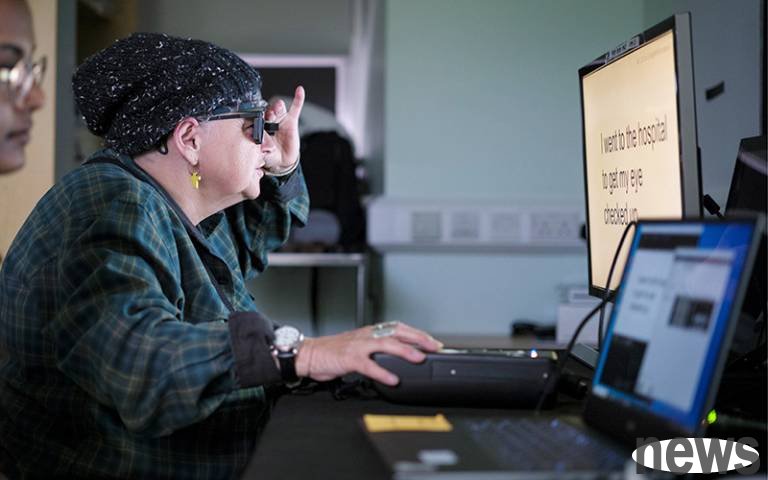
In a ground-breaking clinical trial, researchers from University College London (UCL) and Moorfield Eye Hospital have successfully given blind patients an innovative electronic eye implant, allowing them to regain the ability to read.
This retinal implant, called PRIMA (Photovoltaic Retinal Implant Microarray), combined with augmented reality glasses, can transmit visual data directly to the brain, bringing new hope to patients with dry age-related macular degeneration (AMD).
According to a study published in the New England Journal of Medicine, 84% of patients who participated in the trial were able to recognize letters, numbers and words again. These patients had completely lost their vision due to geographical atrophy. After surgery, these patients were able to read an average of five lines of text on a standard visual chart, whereas before surgery, they could not even read the visual chart.
This study recruited a total of 38 patients across 17 hospitals in five countries, with Moorfield Eye Hospital being the only participating institution in the UK. All participants had complete loss of central vision in the treated eye before receiving the implant. Dry AMD gradually destroys the light-sensitive cells in the retina, resulting in a progressive loss of central vision over time and may eventually lead to complete blindness. Approximately 5 million people worldwide are affected by this disease, and there is currently no effective treatment.
(Source: Science Daily)
Mahi Muqit, associate professor at UCL Eye Institute, said that this technology represents a new era of artificial vision, and blind patients can restore meaningful central vision, which is unprecedented in history. He pointed out that restoring the ability to read can significantly improve patients' quality of life, boost their mood, and help rebuild their confidence and independence.
The PRIMA implant surgical procedure involves removing the vitreous body of the eye and then implanting a 2mm x 2mm microchip under the central retina. After surgery, patients wear augmented reality glasses equipped with photographic lenses that are connected to a pocket-sized computer with zoom capabilities. About a month after surgery, the implant is activated, and the glasses' photographic lens captures the visual scene and converts it into an infrared beam that is projected onto the chip. Artificial intelligence algorithms in the computer process this data and convert it into electrical signals. These signals are sent to the brain through the retina and optic nerve cells, allowing the patient to perceive vision.
After several months of rehabilitation training, participants learned how to use the glasses to scan text and adjust zoom for reading. Of note, none of the participants experienced a decrease in peripheral vision.
One of the patients, Sheila Irvine (pictured above), shared her experience and expressed her hope to participate in the study to help future generations. She had almost completely lost her vision before receiving the implant, and she was thrilled to regain the ability to read after the surgery. She mentioned that while learning to read again was not simple, her ability continued to improve over time.
Tiny AI-powered eye implant helps the blind see again Revolutionary implant allows patients with dry AMD to read again BCI implant’s trial success prefigures ‘new era’ in eye care Electronic Eye Implant Restores Reading Vision in AMD Eye implant restores vision to patients with incurable sight loss Pioneering eye device restores reading vision to blind eyes Further reading: Laser surgery without surgery! Microcurrent can reshape the cornea The key blood factor "Lipoprotein M" helps prevent blindness and improve cardiovascular health Help the blind regain their sight! Neuralink’s new technology, Blindsight, received the “Breakthrough Device” mark from the U.S. FDA